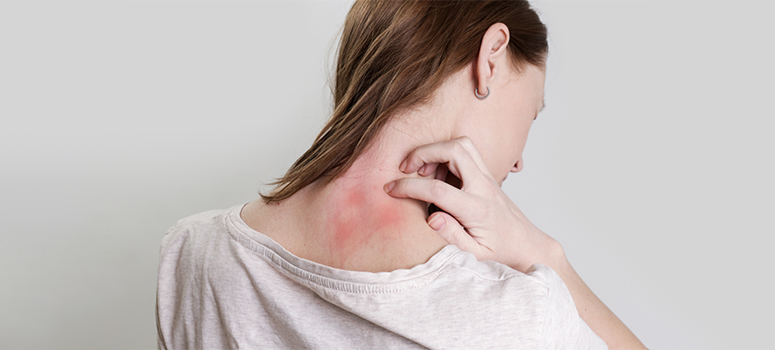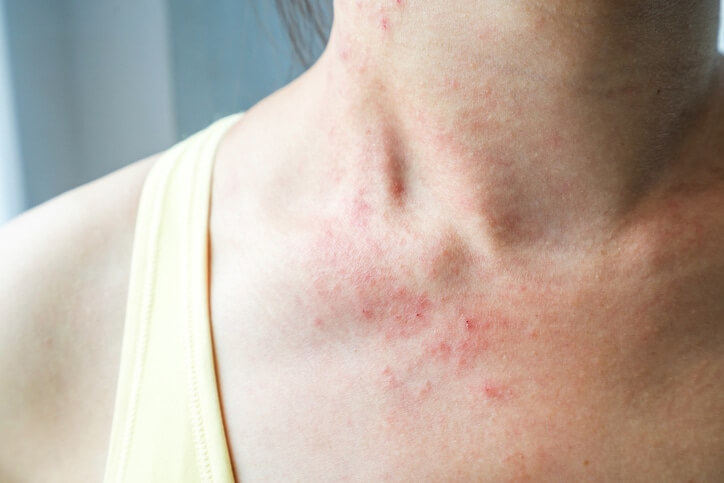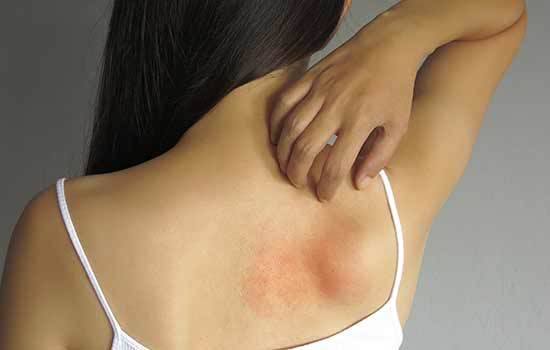Summer is a great time for some fun in the sun, but it means spending more time outside, increasing the chances of skin problems. If you thought acne or tanning was the only skin problem you would encounter in summer, then you’re wrong. During the summer months, the increased exposure to sunlight can cause some itchy and painful red rashes on the skin. This skin condition is called Miliaria Rubra, and it is very common, especially in adults.
What is Miliaria Rubra?
Miliaria Rubra is also known as heat rash, sweat rash or prickly heat. It’s caused by the blockage of the duct gland, resulting in the backflow of eccrine sweat into the dermis or epidermis. This leads to sweat-filled vesicles under the skin.
Signs and Symptoms of Heat Rash
Heat rash is easy to detect because of its recognisable symptoms. There are four different types of heat rash:
- Miliaria Crystalline- It is also called clear heat rash, and it affects the sweat ducts within the top layer of skin. It is mild and does not produce any uncomfortable symptoms.
- Miliaria Rubra- It is also called prickly heat because it may cause itching and burning. It occurs deeper within the skin and appears red in colour.
- Miliaria Profunda- It is also called deep heat rash and especially occurs after exercise or exposure to heat. Large, firm bumps may appear during a flare-up, but they may disappear within 2 or 3 days.
- Miliaria Pustulosa- It is also called white or yellow heat rash. It occurs in conditions of heat and humidity. It is caused by the blockage of sweat ducts and is the first sign of skin infection.
Small children frequently get heat rash because their sweat glands haven’t developed yet, and it is also quite common in up to 30% of adults who move to a tropical environment or are unexpectedly exposed to heat and humidity. The individual may feel tired due to little or no sweating within the affected areas.
Causes of Heat Rash
As mentioned earlier, heat rash occurs because of blocked sweat gland ducts. This can occur due to multiple reasons:
- Sweat glands are still developing, as in newborns
- Tropical climate
- Physical activity
- A fever
- Wearing synthetic fabrics close to the skin
- Wearing a nonporous bandage
- Radiation therapy
- Prolonged bed rest
- Some medications that help reduce sweating
- Some health conditions like toxic epidermal necrolysis
Treatment of Heat Rash
Oatmeal– It is a great anti-inflammatory agent. It helps reduce heat rashes and several other skin conditions. A cool bath with oatmeal can help alleviate the rash.
Talcum Powder– Talcum powder can be used to treat body rashes. It contains cooling agents like menthol, camphor, sandalwood oil, rose oil, peppermint oil, neem oil, kaolin, etc., which help soothe the heat rash. It provides instant relief from prickly heat, heat rash and itching and absorbs sweat all day long.
Cool baths and showers– Bathing is an immediate fix for heat rash, and it also can unclog the pores. A shower will cool you off, relieve your skin and reduce excessive sweating. After bathing, dry your skin properly because skin that’s left wet can become irritated.
Calamine Lotion– Calamine lotion works well against heat rash. It’s made up of zinc oxide, phenol, ferric oxide and calcium hydroxide.
Aloe vera– It is an anti-inflammatory and antiseptic that can cool down the skin while preventing infections. Use aloe vera directly on your skin to get relief from heat rash.
Sandalwood– It is anti-inflammatory and analgesic. To get relief from a heat rash, take sandalwood powder, mix it with water and apply it directly to the rash. It helps reduce burning and any painful sensations.
Oral Antihistamines– These help to treat allergies or inflammations. Antihistamines like cetirizine, loratadine and fexofenadine are helpful for relief from heat rash.
How to Prevent Heat rash?
To protect yourself from heat rash:
- Avoid tight-fitting clothes– Tight-fitting clothes can cause skin irritation, so avoid them.
- Air conditioning– When it’s hot, stay inside and avoid the outdoors. To keep your body cool, use an air conditioner or a fan.
- Keep yourself hydrated– Heat rashes occur when you are dehydrated. You can stop this by drinking lots of water.
When Do You Have to See a Doctor?
Heat rash is common, especially among adults and anyone staying in a tropical climate. It usually goes away in 3-4 days on its own or with home remedies.
If these treatments don’t work or make the heat rash worse, and if there are symptoms such as blisters, it’s time to consult your dermatologist.
Conclusion
We hope you know how to spot a heat rash and how to get rid of it using home remedies. So, always take care of your skin, and if it leads to severe skin infection, it is essential to consult a doctor immediately. If you’re looking for other skincare tips, you can visit Skin and Hair Academy.
















